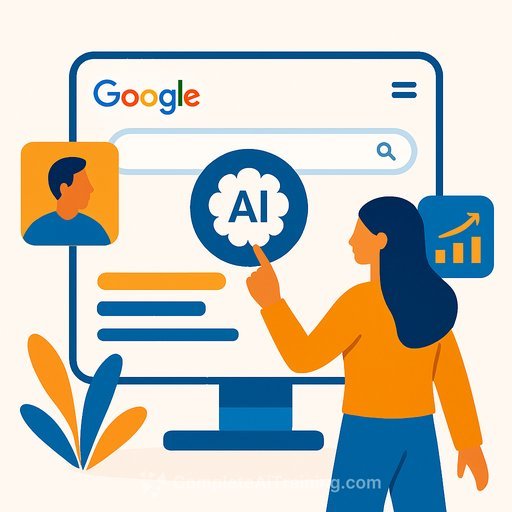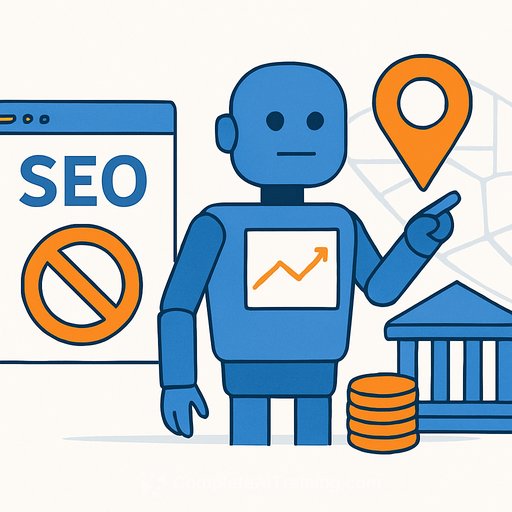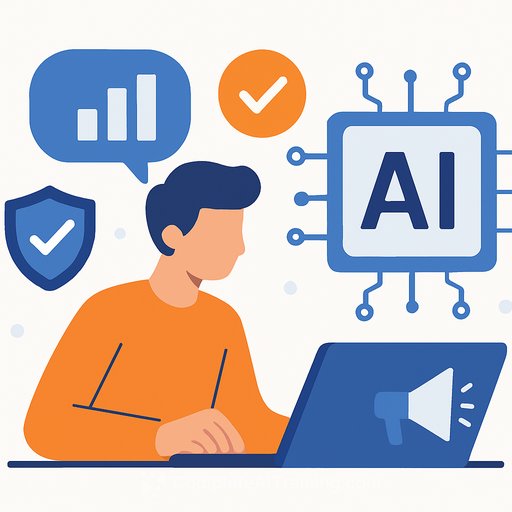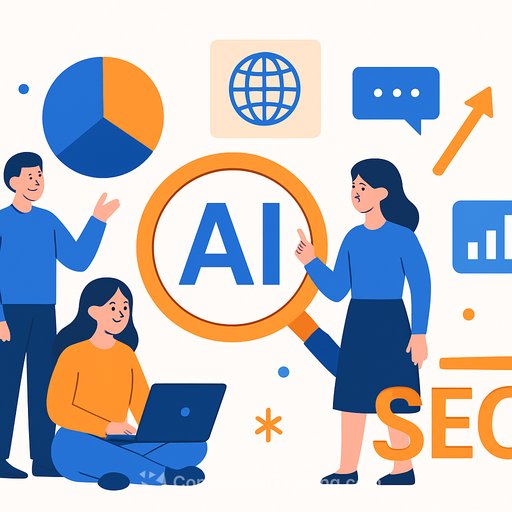Google's AI Mode: Fewer Clicks for Publishers, New Plays for Marketers
Google is shifting from search results to direct answers. That's convenient for users and tough for publishers who depend on traffic. For marketers, intent is still there-just surfaced in a new way.
What AI Mode Changes
AI Mode lets people ask longer, multi-step questions and follow up conversationally. Google breaks a query into subtopics and runs multiple searches behind the scenes, then returns a synthesized answer with fewer (sometimes zero) blue links.
Example: "Compare coffee brewing methods in a table by taste, ease, and equipment. Then, what grind size suits each method?" This is closer to a ChatGPT-style response than a classic results page.
Google frames this as fewer searches with richer answers. Publishers, however, see fewer clickable outcomes on the page.
Traffic Reality Check
Google says clicks that do happen from AI Overviews are "higher quality"-but the key phrase is "when people click." Multiple studies suggest clicks to primary sources drop when a strong AI answer appears. Google disputes there's an aggregate decline, but several third parties report the opposite.
If you rely on organic traffic alone, expect volatility. If you sell products or capture leads, new ad placements and answer-first content can still win attention.
Why Marketers Should Care
AI Mode concentrates intent and compresses the decision path. That means fewer touchpoints, faster choices, and higher stakes for the few elements that remain visible: structured answers, product data, and ad units.
The upside: you can meet demand earlier, present clearer options, and close with fewer hops-if your assets are built for extraction and your ads are set up to appear inside these new experiences.
Playbook: How to Respond Now
- Structure for extraction: Add tight summaries, bullet lists, and tables at the top of key pages. Use clear headings that map to common questions. Keep answers concise.
- Use schema markup: Implement FAQPage, HowTo, Product, QAPage, and Review markup where relevant. Make it easy for Google to pull accurate snippets.
- Answer follow-up intent: Anticipate the "next question" and address it inline. Example: method comparison then grind size; itinerary then budget; symptom then option ranges.
- Refresh product data: Clean feeds, complete attributes, high-quality images, pricing accuracy, availability, shipping speed, and verified reviews.
- Lean into Performance Max: In regions where Ads in AI Overviews appear, use PMax to access those surfaces. Ensure conversions, value rules, and offline imports are set up.
- Creative built for answers: Provide variations that map to the problem, the use case, and the proof (benefits, specs, social proof). Short, skimmable, and specific.
- Value-based bidding: Move beyond last-click CPA. Use conversion values, LTV models, and offline signals to steer spend toward high-quality demand.
- Own your data: Grow consented first-party lists. Sync audiences to Google to inform bidding and assets. Use server-side tagging to protect signal quality.
- Diversify demand: Pair search with video, creator partnerships, and email to limit dependence on organic clicks that may shrink.
- Support top publishers: If your category relies on expert reviews, build co-branded content, affiliate partnerships, and exclusive tests to keep the ecosystem healthy.
SEO Moves That Still Matter
- Entity clarity: Make your brand, products, and categories unambiguous with consistent naming, internal linking, and About/Contact/Policy pages.
- E-E-A-T signals: Put real experts on key content, include bios and credentials, cite sources, and keep pages updated.
- Query coverage: Map clusters by intent (learn, compare, choose, buy). Turn them into simple answers and check if AI Overviews cite you.
- Page speed and basics: Fast, clean, mobile-first pages still influence inclusion and conversions.
Ads in AI Overviews (US Today, Testing Elsewhere)
In the US, Google is placing ads inside AI Overviews and testing in AI Mode. Access is routed through Performance Max, which already spans YouTube, Discover, Search, and more.
Prepare by aligning feed health, conversion values, and creative coverage to common multi-part queries. Track impression share, new surfaces, and blended CPA/CAC across channels.
For background on AI Overviews, see Google's overview on The Keyword: Google AI Overviews.
Measurement That Keeps You Honest
- Brand safety net: Watch branded search clicks and CTR. If they dip, consider sitelink and asset tweaks, or add protective bidding.
- Overview presence: Track which queries trigger AI Overviews in your category and whether your pages are cited. Adjust content format accordingly.
- Incrementality: Use geo or audience split tests to see how adding PMax and new assets affects blended revenue, not just channel ROAS.
- Assisted revenue: Model cross-channel assists. AI answers may compress paths, so last-click can mislead.
Rollout Notes (Australia)
Availability may be inconsistent. Some users report "AI Mode not currently available on your device or account," even on mainstream setups. Keep testing across accounts and devices before making broad conclusions.
What This Means Big Picture
Google is prioritizing faster decisions with fewer clicks. Publishers feel the squeeze; Google says remaining clicks are higher quality, but volume is the pressure point.
Marketers who adapt content for extraction and prepare ad accounts for new surfaces will capture intent earlier and convert with fewer steps.
Quick Checklist
- Convert top pages to answer-first formats with schema.
- Clean product feeds; expand reviews and images.
- Shift to value-based bidding and offline conversion imports.
- Expand PMax assets to match multi-part queries.
- Track AI Overview presence and citations by query cluster.
- Diversify demand and support key publishers in your niche.
Level Up Your Team
If you need a focused path to update skills for AI-era search and ads, explore our programs for marketers: AI Certification for Marketing Specialists.
Your membership also unlocks:






